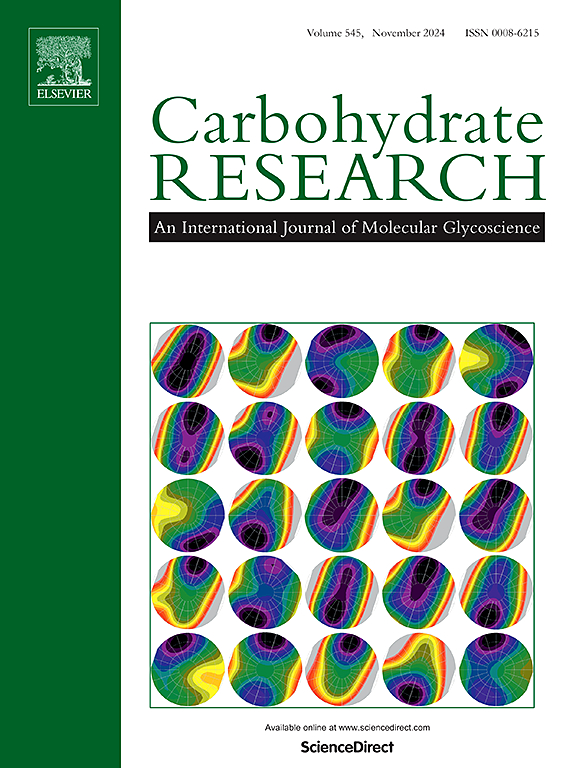Relationships between bacteria and the mucus layer
IF 2.4
3区 化学
Q3 BIOCHEMISTRY & MOLECULAR BIOLOGY
引用次数: 0
Abstract
The mucus layer on epithelial cells is an essential barrier, as well as a nutrient-rich niche for bacteria, forming a dynamic, functional and symbiotic ecosystem and first line of defense against invading pathogens. Particularly bacteria in biofilms are very difficult to eradicate. The extensively O-glycosylated mucins are the main glycoproteins in mucus that interact with microbes. For example, mucins act as adhesion receptors and nutritional substrates for gut bacteria. Mucins also play important roles in immune responses, and they control the composition of the microbiome, primarily due to the abundance of complex O-glycans. In inflammation or infection, the structures of mucin O-glycans can change and thus affect mucin function, impact biofilm formation and the induction of virulence pathways in bacteria. In turn, bacteria can support host cell growth, mucin production and can stimulate changes in the host immune system and responses leading to healthy tissue function. The external polysaccharides of bacteria are critical for controlling adhesion and biofilm formation. It is therefore important to understand the relationships between the mucus layer and microbes, the mechanisms and regulation of the biosynthesis of mucins, of bacterial surface polysaccharides, and adhesins. This knowledge can provide biomarkers, vaccines and help to develop new approaches for improved therapies, including antibiotic treatments.

细菌与粘液层之间的关系。
上皮细胞上的粘液层是一道重要的屏障,也是细菌营养丰富的栖息地,形成了一个动态、功能性和共生的生态系统,是抵御病原体入侵的第一道防线。尤其是生物膜中的细菌很难根除。广泛的 O 型糖基化粘蛋白是粘液中与微生物相互作用的主要糖蛋白。例如,粘蛋白是肠道细菌的粘附受体和营养底物。粘蛋白在免疫反应中也发挥着重要作用,它们还能控制微生物群的组成,这主要归功于大量复杂的 O 型糖。在炎症或感染时,粘蛋白 O 型糖的结构会发生变化,从而影响粘蛋白的功能,影响生物膜的形成和诱导细菌的毒力途径。反过来,细菌又能支持宿主细胞生长、产生粘蛋白,并能刺激宿主免疫系统和反应的变化,从而导致健康的组织功能。细菌的外部多糖对于控制粘附和生物膜的形成至关重要。因此,了解粘液层与微生物之间的关系、粘蛋白、细菌表面多糖和粘附素的生物合成机制和调控非常重要。这些知识可以提供生物标志物和疫苗,并有助于开发改进疗法(包括抗生素疗法)的新方法。
本文章由计算机程序翻译,如有差异,请以英文原文为准。
求助全文
约1分钟内获得全文
求助全文
来源期刊

Carbohydrate Research
化学-生化与分子生物学
CiteScore
5.00
自引率
3.20%
发文量
183
审稿时长
3.6 weeks
期刊介绍:
Carbohydrate Research publishes reports of original research in the following areas of carbohydrate science: action of enzymes, analytical chemistry, biochemistry (biosynthesis, degradation, structural and functional biochemistry, conformation, molecular recognition, enzyme mechanisms, carbohydrate-processing enzymes, including glycosidases and glycosyltransferases), chemical synthesis, isolation of natural products, physicochemical studies, reactions and their mechanisms, the study of structures and stereochemistry, and technological aspects.
Papers on polysaccharides should have a "molecular" component; that is a paper on new or modified polysaccharides should include structural information and characterization in addition to the usual studies of rheological properties and the like. A paper on a new, naturally occurring polysaccharide should include structural information, defining monosaccharide components and linkage sequence.
Papers devoted wholly or partly to X-ray crystallographic studies, or to computational aspects (molecular mechanics or molecular orbital calculations, simulations via molecular dynamics), will be considered if they meet certain criteria. For computational papers the requirements are that the methods used be specified in sufficient detail to permit replication of the results, and that the conclusions be shown to have relevance to experimental observations - the authors'' own data or data from the literature. Specific directions for the presentation of X-ray data are given below under Results and "discussion".
 求助内容:
求助内容: 应助结果提醒方式:
应助结果提醒方式:


